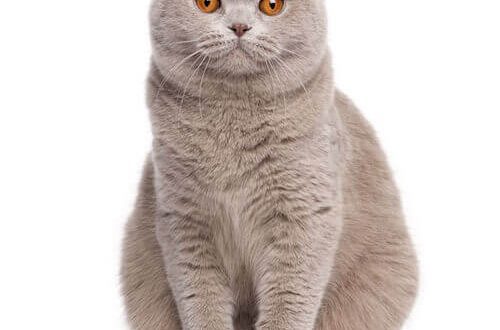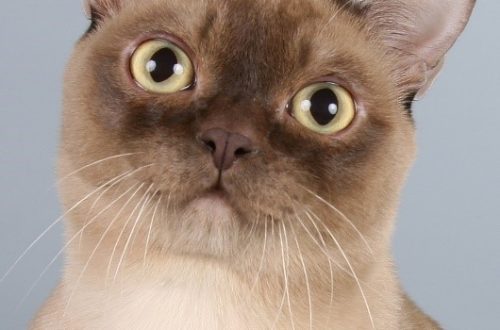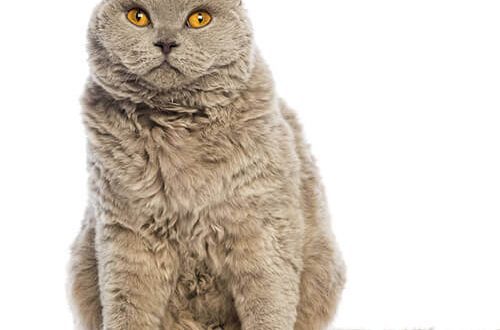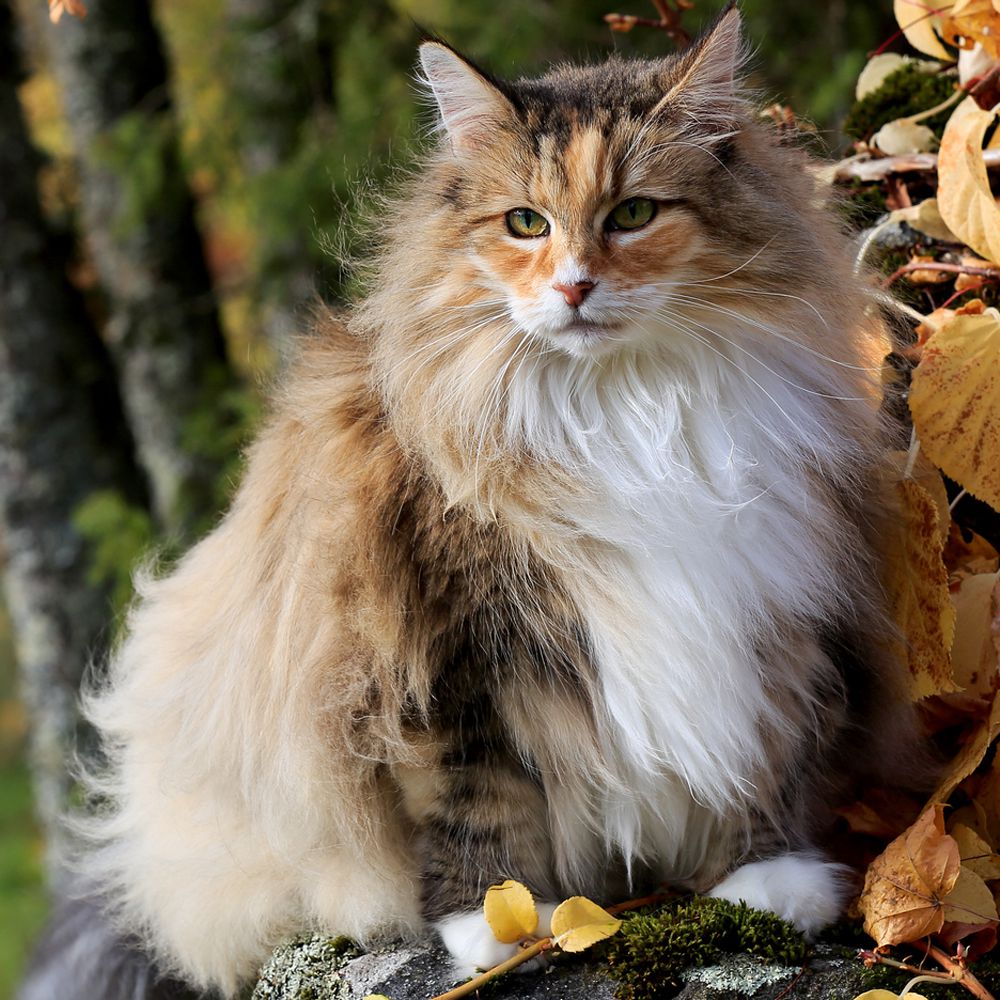
Norwegian Forest cat
Other names: skogkat
The Norwegian Forest Cat is still quite rare in our latitudes, but has long been a favorite breed of Europeans. This is a friendly and independent pet that will easily find the “key” to each family member.
Contents
- Characteristics of Norwegian Forest cat
- Basic moments
- History of the Norwegian Forest Cat
- Video – Norwegian Forest cat
- Appearance of the Norwegian Forest Cat
- Photo of Norwegian Forest Cats
- Personality of Norwegian Forest Cats
- Care and maintenance
- Health and disease of the Norwegian Forest cat
- How to choose a kitten
- Photo of norwegian forest kittens
- How much is a norwegian forest cat
Characteristics of Norwegian Forest cat
| Country of origin | Norway |
| Wool type | longhaired |
| Height | 30–40 cm |
| Weight | 5–8 kg |
| Age | 10–15 years |
Basic moments
- Norwegian Forest Cats are fairly large animals. Adult cats can weigh up to 10 kg.
- They are in good health and do not require troublesome care.
- A stable psyche and calm nature allow Stogkatts to adapt to life in a large family.
- When playing, Norwegian Forest cats almost never let out their claws and do not show aggression in stressful situations, which is especially appreciated by parents of young children.
- The main requirements for the content are sufficient physical activity (ideally, if it is free walks) and the presence of its own “fortress”, where the pet can retire when it wants solitude.
- In the behavior of Norwegian Forest cats, moments of craving for independence and the need for communication with a person alternate; excessive manifestations of love never cause delight.
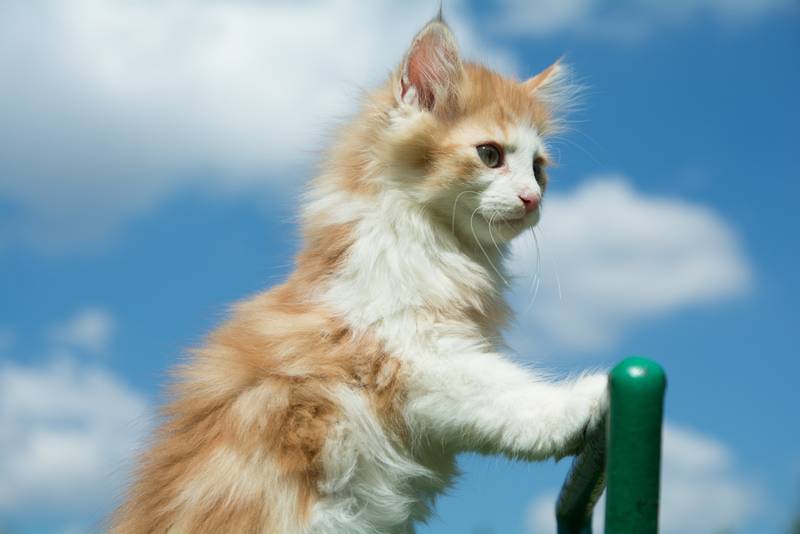
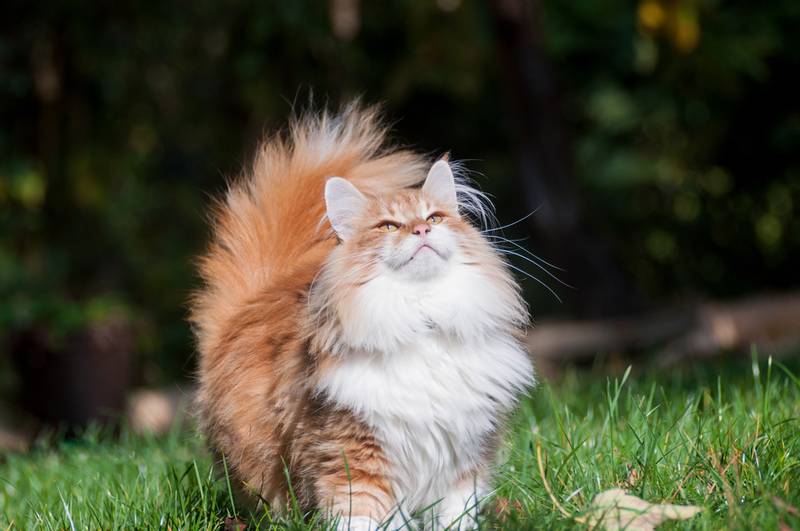
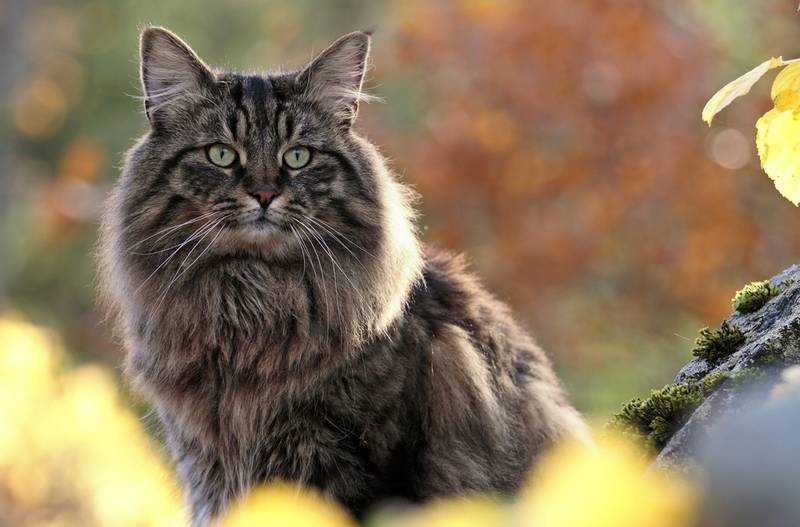
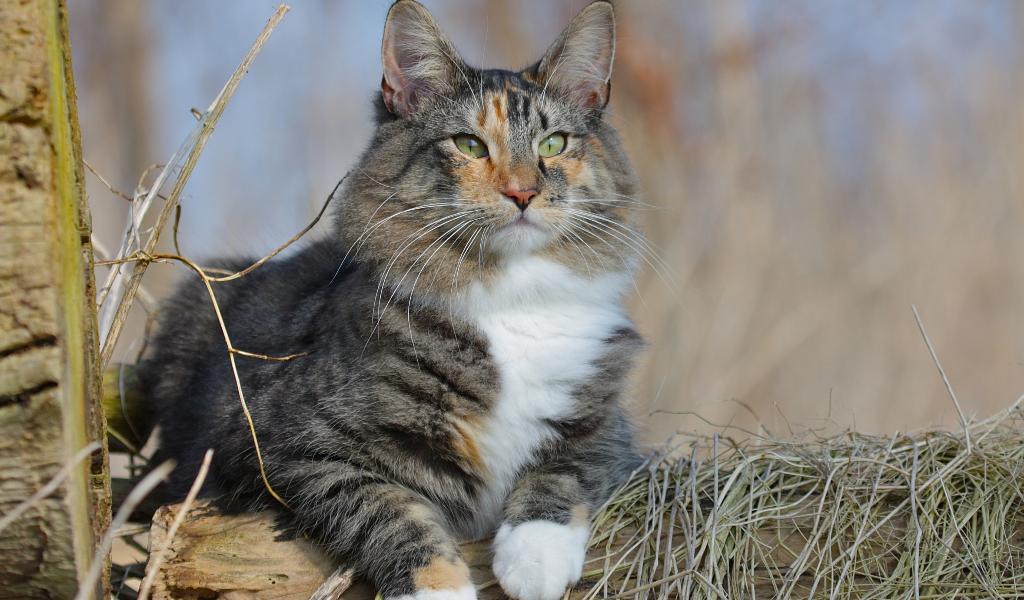
The Norwegian Forest cat attracts attention at any exhibition due to its aristocratic appearance and impressive size. Due to the thick coat of medium length, it seems even larger than it actually is, while being very mobile and playful, but not prone to destructive pranks for the home. The Norwegian Forest cat does not tolerate forced loneliness, however, it requires respect for its personal space.
History of the Norwegian Forest Cat
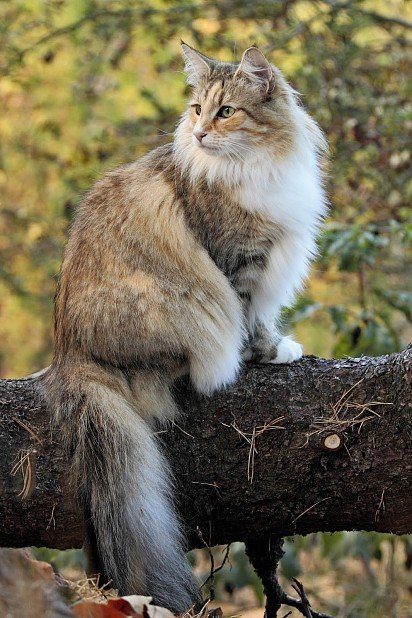
As you can guess from the name (in different dialects of the Norwegian language, “forest” sounds differently, so two options are in use – Norsk skogkatt or Norsk skaukatt), these fluffy beauties come from the Scandinavian forests. Scientists today do not have exact data on how long they live next to a person. The hypothesis is very popular that it is worth counting from the 16th century, when angora cats came to Western Europe from Ankara . The harsh climate of the peninsula and the need to climb a lot of trees led to the appearance of an undercoat, strengthening of the claws and the formation of an athletic physique.
However, one cannot completely dismiss the possibility that under the influence of external factors in the new environment in Felis silvestris grampia, regardless of its Mediterranean relatives, the Angora mutation responsible for the length of the coat occurred and became fixed. And those same wild Scottish cats were brought to the territory of modern Norway by the Vikings, who colonized Shetland, Orkney and the Hebrides in the 9th-10th centuries. This version is supported by the traditional image of the leader of the Valkyries, the goddess of fertility, love and war, Freya – the ancient sagas depict her in a chariot drawn by two cats, whose magnificent tails are clearly reminiscent of our today’s heroes.
In the 19th and first half of the 20th century, many Norwegian and Swedish families kept these cats as pets. In the 1930s, after their triumphant appearance at the international exhibition in Germany, serious work began on the phenotype of the breed, the purpose of which was to preserve the best natural qualities and eliminate undesirable traits. But with the outbreak of World War II, this had to be forgotten, and in the second half of the 40s, the very existence of the Norwegians was threatened due to spontaneous crossing with other cats. The situation was brought under control only by the forces of enthusiasts. A special committee was set up to give permission for breeding only to those owners whose animals met the standard. The efforts of the Norwegian Association of Pedigree Cat Fanciers were rewarded: King Olav V recognized the Skogkatt as the official breed of the country, and in 1977 Pans Truls received the coveted registration with the International Cat Federation (FIFe). By the way, it is he, paired with Pippa Skogpuss, who is considered the founder of the modern breed. Born from their union, Pans Silver became the father of 12 litters at once and today is mentioned in almost every pedigree of a purebred Norwegian.
World recognition has given breeders the right to draw up international pedigrees. At the same time, the export of Norwegian forest cats abroad began. Now most of these pets live in Sweden, but other European countries are not far behind. In the United States, local Maine Coons (which, by the way, some tend to consider descendants of Norwegians) are too serious competition for guests from across the ocean to talk about real popularity. In Russia, Siberians are still numerically winning among large breeds , although specialized nurseries have already been opened in Moscow, St. Petersburg, Novosibirsk, Vladivostok and some other cities.
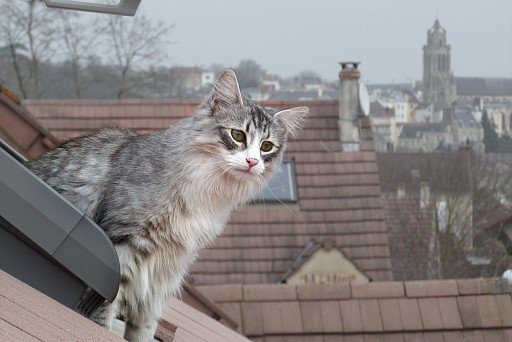

Video – Norwegian Forest cat
Appearance of the Norwegian Forest Cat
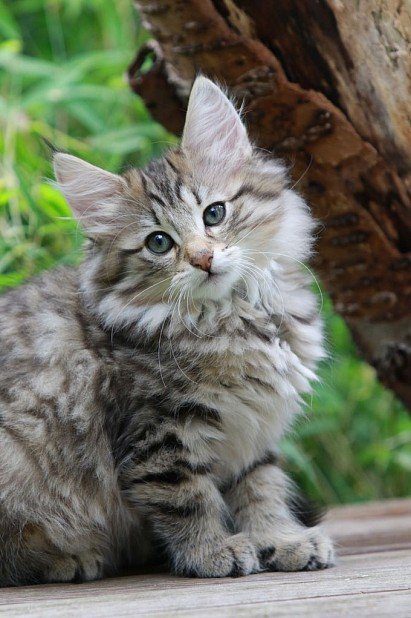
The size of the Norwegian Forest Cat ranges from medium to large. Like other large breeds, they reach final maturity quite late – at 4-5 years. Animals seem more massive due to thick wool. Exact indicators of height and weight are not indicated by the WCF breed standards, but experienced breeders say that the norm for an adult is 30-40 cm in height, weight depends significantly on gender: cats weigh an average of 5.5 kg (although graceful 4-kilogram ones are often found). ladies), and cats reach 6-9 kg.
Head
In the form of an equilateral triangle, the outlines are smooth, the profile is straight, without a “stop”, the forehead is high and almost flat. The cheekbones are not pronounced, geometrically straight and long. The nose is of medium length, almost always pink. Jaws are powerful. The chin is square or rounded.
Eyes
The eyes of the Norwegian Forest Cat are large and expressive. They are oval or almond shaped. Set a little obliquely. The preferred color is green, gold and their shades, although other options are not considered a disadvantage. White cats are allowed heterochromia (eyes of different colors).
Ears
Medium in size, with a broad base and slightly rounded tips where tassels are desirable. Set high and wide on the head, the outer edge continues the line of the head. Inside are covered with long hair.
Neck
Medium length, flexible, well developed muscles.
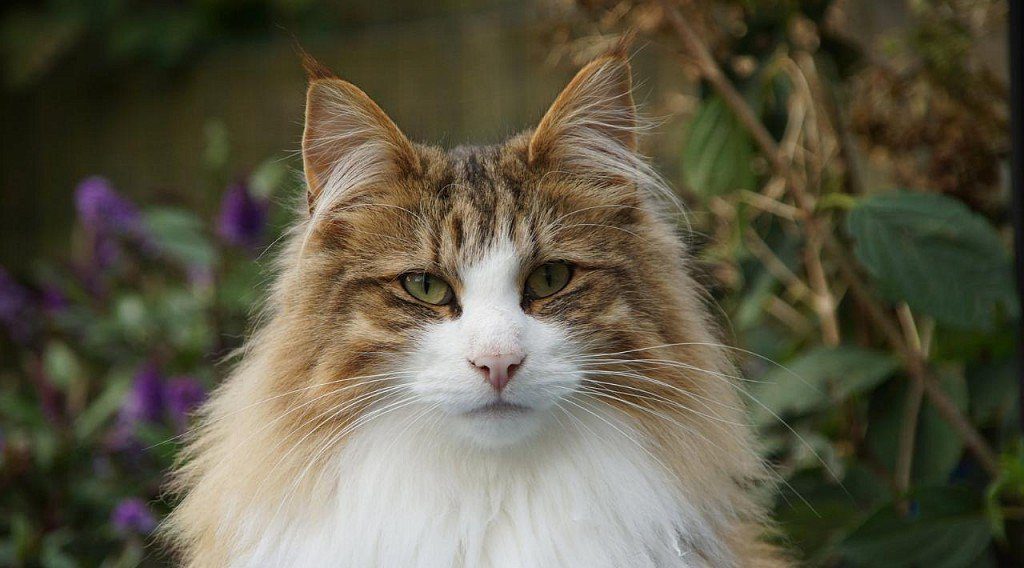
Body
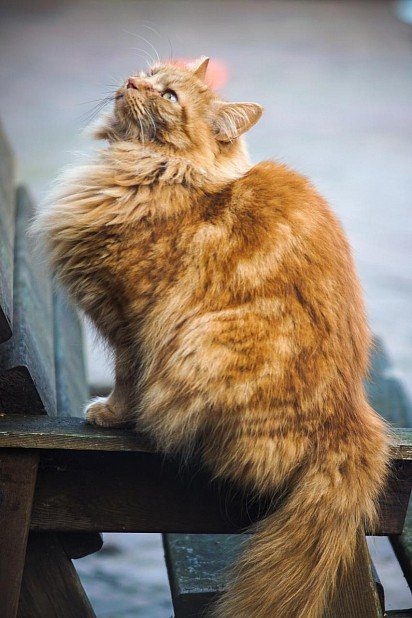
The body of the Norwegian Forest Cat is large, powerful, relatively long. The backbone is strong, heavy, the muscles are dense and well developed. The chest is round and broad. The back of the body is above the line of the shoulders.
limbs
Front medium length, powerful. Hindquarters much longer, athletic, thighs strong and muscular.
Paws
Round or oval, wide. The fingers are well developed, dense tufts of wool are located between them.
Tail
Flexible and long – in a curved position reaches the line of the shoulders or neck. Set high. Wide at the base, somewhat tapering towards the tip, always fluffy.
Wool
Semi-long, dense, with a fluffy and moderately wavy undercoat. The outer hair is smooth, has a water-repellent effect due to oiliness. Because of this feature, the coat of the Norwegian Forest Cat can look a little unkempt. The length depends on the location: the shortest hairs on the shoulders and back gradually lengthen, turning into a spectacular “collar”, “bib” and “panties”. The degree of expression of such decorating fragments can be different and is not strictly regulated by the rules.
Color
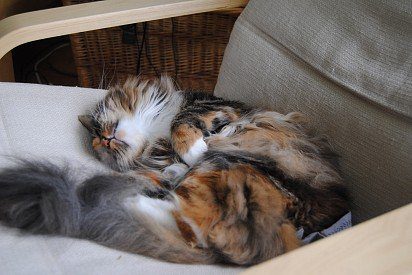
Can be solid, bicolor, shaded, smoky, tabby. In total, 64 color variants of Norwegian Forest cats are recognized, but the list varies by organization. So, the International Federation does not allow light brown, yellowish brown and shades that are characteristic of Burmese cats , but considers white in any variation to be the norm. And the French Central Society of Cat Fanciers (SCFF) outlaws chocolate, purple stogkatts and color points.
Flaws
Too small sizes. Insufficiently strong bones. Poorly developed muscles. Square body. The head is square or round. Profile with a “stop”, that is, a transition from the forehead to the rest of the muzzle with a pronounced depression. Small or round eyes. Small ears. Short legs. Short tail.
Disqualifying faults
Wool with a silky texture, dry or matted. Amputated claws, deafness, testicles outside the scrotum.
Photo of Norwegian Forest Cats
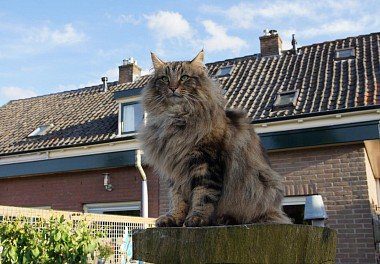
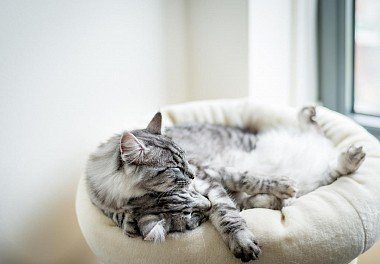
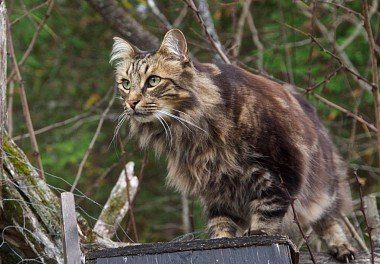
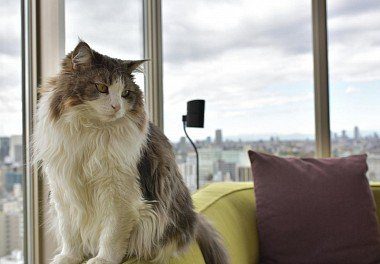
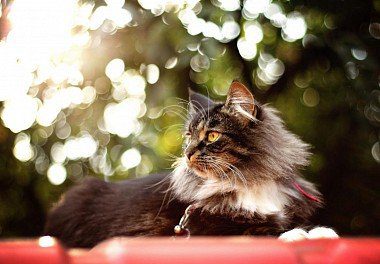
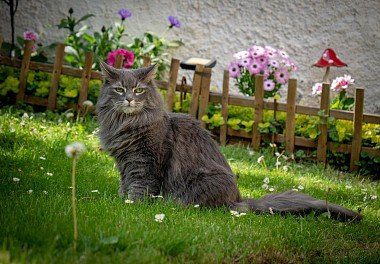
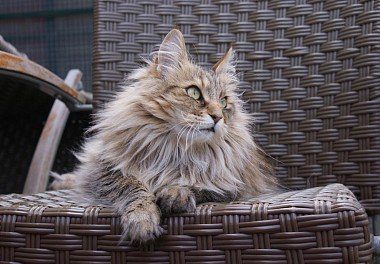
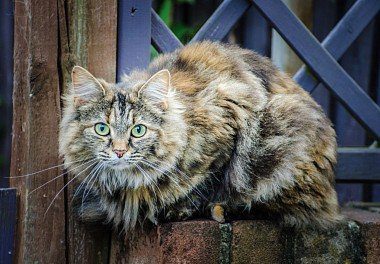
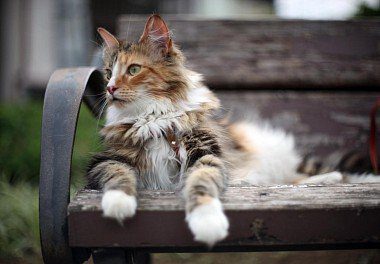
Personality of Norwegian Forest Cats
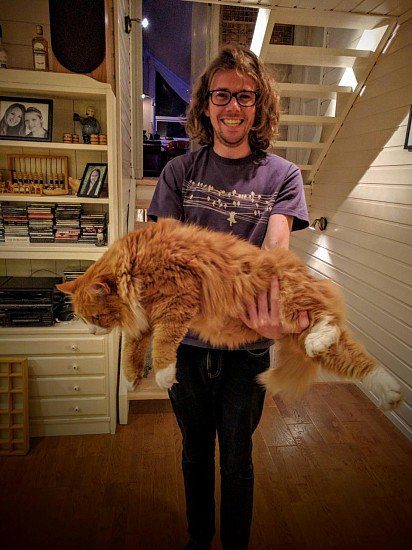
Speaking about the inner world of Stogkatts, first of all, it is worth noting that in terms of their temperament they are typical children of Scandinavia. Balanced, outwardly they rarely show emotions, they prefer not to get involved in conflicts, they treat others kindly, but do not tolerate violations of the boundaries of personal space – in a word, the Nordic character.
Since the Norwegian Forest Cats have long been left to the exclusive care of nature, they have a rather strong craving for the “wild” life. Of course, Norwegians can be kept in a city apartment, but they will feel most comfortable in a private house, where they can go for walks every day and hone their hunting skills. In this case, do not be alarmed if your pet disappears from sight for several hours or even a whole day – periods of independence and “roaming” are completely normal for representatives of this breed. But at other times, you may well receive a severe reprimand for a long absence, because Norwegian forest cats do not like to be alone when the soul requires society. The absence of the “main person” – that family member, causes a particularly sharp reaction.
In general, Norwegian Forest cats are very friendly and are great for living in a large family with small children and other animals. In response to the obsessive attention from kids or dogs, you will not see aggression, Norwegians prefer to retire and wait out an unpleasant situation in a secluded place.
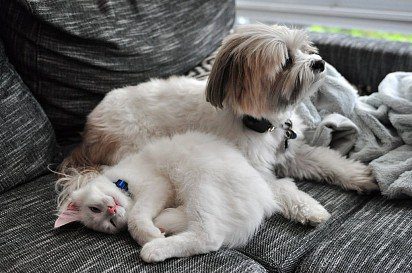
If you dream of teaching your cat fun tricks and basic commands, choose anything but Norwegian cats. Knowing perfectly well what they want to achieve from them with words and treats, these wayward northerners simply ignore the trainer. They make their own decisions and refuse to obey the whims of others.
High intelligence goes hand in hand with curiosity and excellent memory. Skogkatts like to follow the movements and habits of the household, they know exactly what order of things is typical in their home, and immediately draw the attention of the owner to any deviations from the norm, whether it be water dripping from somewhere or a bag of groceries left for a long time in the middle of the room. The voice of the Norwegian forest cats is not loud in comparison with other relatives, and they do not use the “sound notification” too often, so they will not bother the neighbors with their concerts in vain.
Breeders note the playful disposition of this breed, and it does not have a strict binding to age. Even older cats (if their health permits) hunt toy mice, balls and a trace from a laser pointer with great pleasure and enthusiasm of a small kitten.
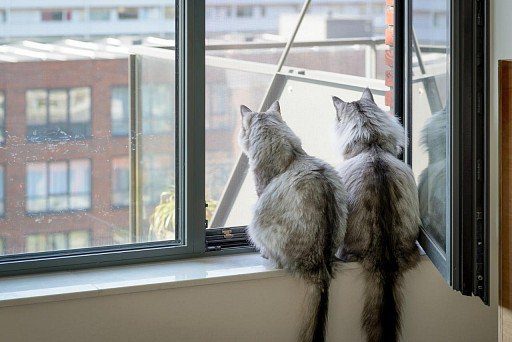
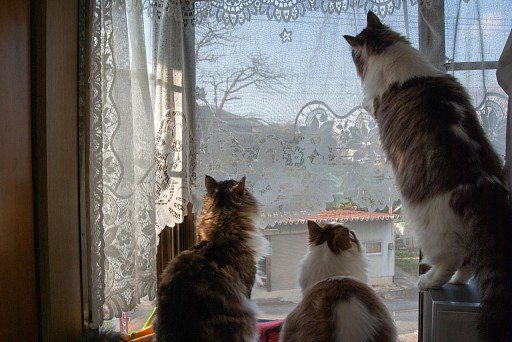
Care and maintenance
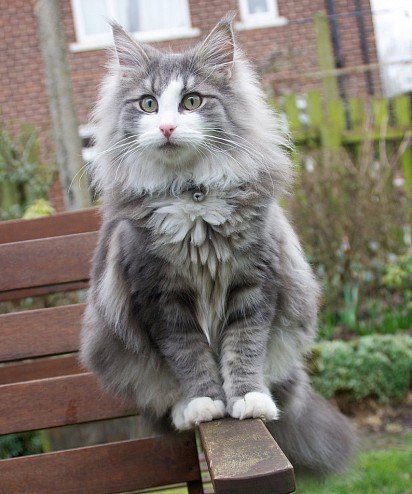
As already mentioned, the ideal home for the Norwegian Forest Cat would be a private household with its own yard. In this way, sufficient physical activity can be guaranteed, and it is the fresh air that contributes to the healthy sheen of the coat. If you only have an apartment at your disposal, it is highly recommended to take your pet for a walk at least once a month, remembering to put on a helmet of a suitable size in order to stop attempts to go on an independent trip or climb to the very top of a sprawling maple. By the way, the ability to climb vertical surfaces is very important for Norwegians, as it is part of their natural behavior. As a result of constant training of many generations of ancestors, the claws on all four paws became so powerful that this cat (the only one among domesticated ones, by the way! ) is able to go down a steep trunk upside down without any problems. When living in an apartment, you should definitely purchase a special cat tree with a large platform on top, from where she can observe what is happening in the room.
Experts do not put forward specific requirements for the daily diet of the Norwegian Forest Cat. The only moment that deserves special attention is the portion size. Since Norwegians are larger than many other breeds, they need a little more food. When calculating, it is necessary to take into account the current weight of the pet. Otherwise, the advice is standard: professional premium food or a balanced natural diet that includes animal proteins, cereals and vegetables. It is important not to overfeed the animal at any age, since obesity provokes many serious diseases. It is imperative to ensure constant access to fresh water, especially if you have opted for dry food.
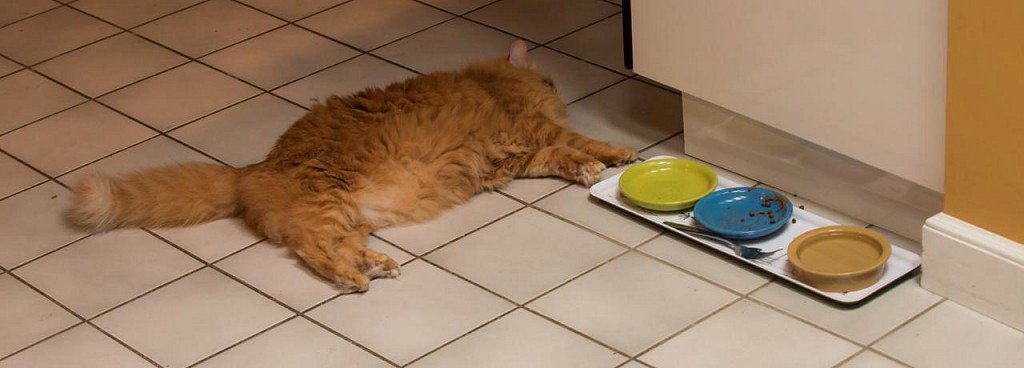
Looking at the chic fur coat of the Norwegian Forest Cat, many are sure that with the advent of such a pet, all their free time will have to be devoted to grooming. In fact, the situation is quite different. Nature made sure that thick and long fur did not cause serious trouble for the animal, because in the northern forests one can hardly count on regular visits to grooming salons. The special structure of the undercoat and outer hair prevents matting, so there are no problems with the formation of tangles (as, for example, in Angora and Persian cats). Of course, in spring and autumn, during the period of active molting, it is recommended to carefully comb the animal every two days, or even daily. This way you will avoid the formation of an additional “carpeting” of fallen wool on all surfaces in the house.
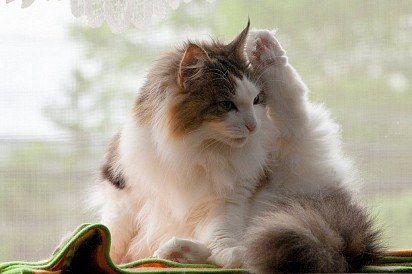
The water-repellent fatty layer on the wool plays an important role in maintaining the health of the Norwegians, so bathing them is only in extreme cases:
- if necessary, flea treatment;
- if the cat gets really dirty during the walk;
- before participating in the exhibition.
It is worth considering that the washing process, due to the specifics of wool, requires time and patience. The liquid simply drains from the outer hairs, leaving the undercoat dry, so experienced breeders advise first rubbing a special shampoo for oily wool dry, and only then turn on the water. It is likely that more than one soaping will be needed, but the conditioner will definitely be superfluous. If the temperature in the room does not threaten the Norwegian Forest Cat with hypothermia, it is better to simply wipe it with a towel and wait until the fur coat dries itself.
Animals that do not have free access to the outside world should have their nails trimmed every two to three weeks. With the same frequency, the auricles are cared for with the help of cotton swabs and special products.
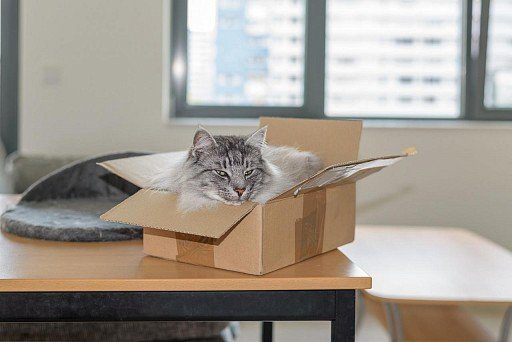

Health and disease of the Norwegian Forest cat
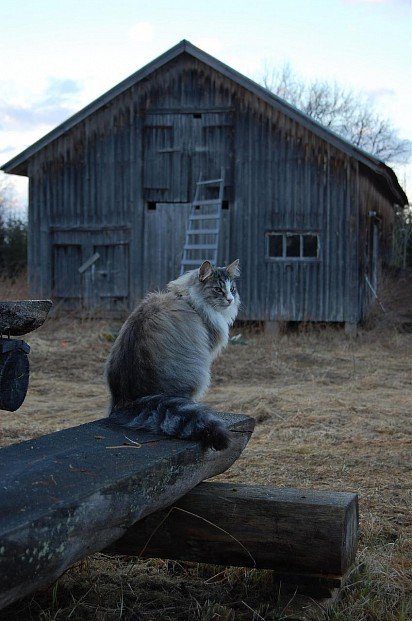
Natural selection, which determined the development of the breed for several centuries, led to the formation of a strong and healthy population. Of course, recent human intervention – breeding work, a limited number of genetic lines – has had negative consequences, but in general, Norwegian Forest cats remain strong and hardy. They are at risk for only a few serious diseases:
- restrictive cardiomyopathy – a decrease in the extensibility of the heart muscle and the subsequent development of chronic heart failure;
- diabetes – a violation of the function of the endocrine system due to insulin deficiency;
- arthrosis of the hip – a chronic disease of the joints;
- retinal dysplasia – incorrect formation of retinal layers in the process of intrauterine development;
- chronic renal failure – decreased kidney function;
- type IV glycogenosis – a genetic disease that provokes a violation of liver metabolism and cirrhosis, such kittens are born dead or die shortly after birth, in rare cases they live up to 4-5 months;
- Purivatkinase deficiency is another genetic disease that causes a reduction in the number of red blood cells and anemia.
The last two are less and less common today, since genetic analysis makes it possible to identify carriers of recessive genes and exclude receiving a litter from two carriers.
At the age of 6-8 weeks, the first introduction of a polyvalent vaccine is carried out (most often this is the care of the breeder, not yours), re-vaccination is carried out at 6-8 months. Further, it is enough to do the vaccinations recommended by the veterinarian annually.
With due attention to the health of the cat from the owners, proper nutrition, sufficient physical activity and the absence of congenital diseases, Norwegian forest cats live 15-16 years, while maintaining an active and tenacious mind.
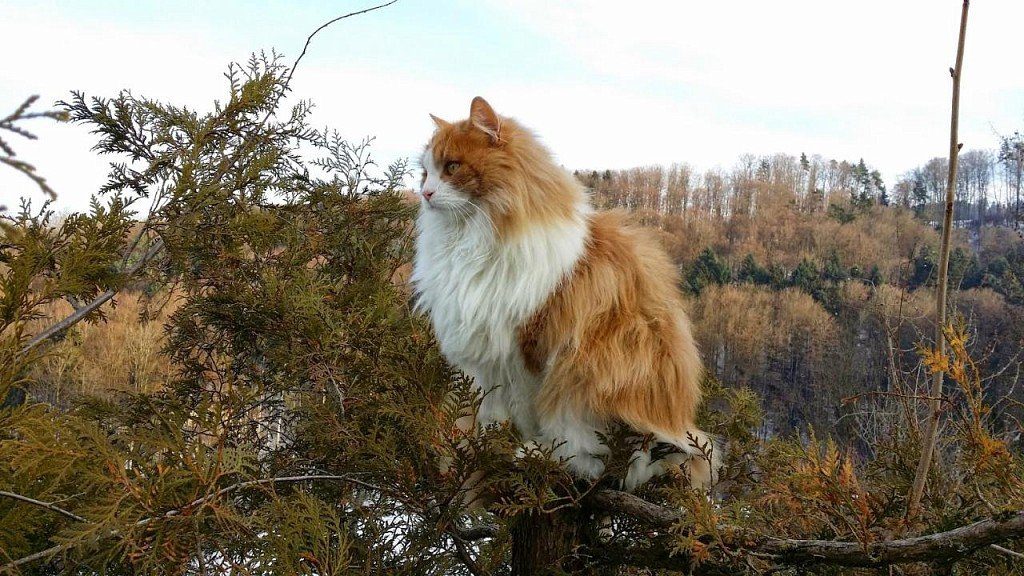
How to choose a kitten
Like any other thoroughbred cat, the Norwegian Forest cat should only be purchased from reputable catteries or trusted breeders. An attempt to save money and buy a pet at the “bird market” or through private ads most often ends up with the fact that you get an ordinary fluffy “nobleman” or, even worse, a baby with a lot of genetic abnormalities. If you plan to participate in exhibitions, you should carefully check the pedigree of the parents and the compliance of the kitten with the approved breed standard, because minor shortcomings from the point of view of the amateur can lead to low expert ratings and even disqualification. It is extremely difficult to assess the quality of wool at a young age, so here they are guided by the external data of the parents.
The general requirements for a kitten of any class are simple:
- mobility, playfulness and curiosity, which speak of normal development and health;
- a good appetite;
- clean eyes and ears without extraneous secretions;
- pink gums;
- absence of skin parasites;
- slightly rapid, but at the same time even breathing after physical exertion (the opposite indicates problems with the cardiovascular system).
Important indicators are also the conditions of the mother and kittens – sufficient space for active games, cleanliness, the presence of toys, the mode and quality of nutrition. Be sure to make sure that the first necessary vaccination is carried out.
Photo of norwegian forest kittens
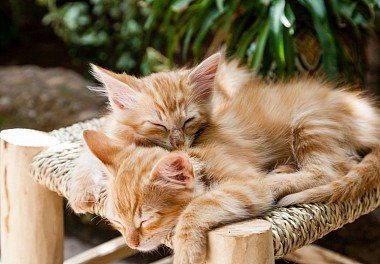
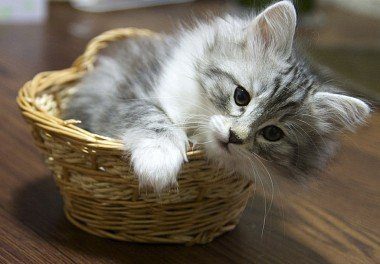
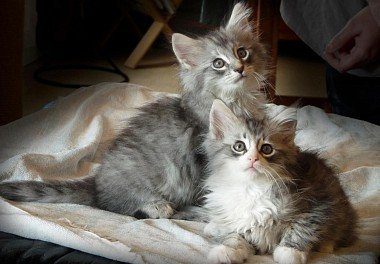
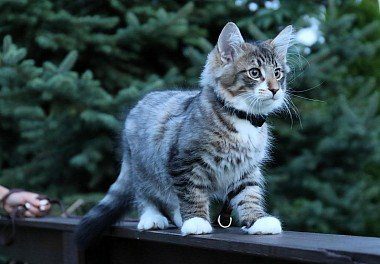
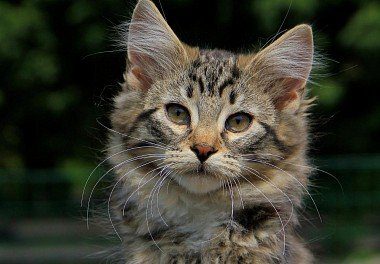
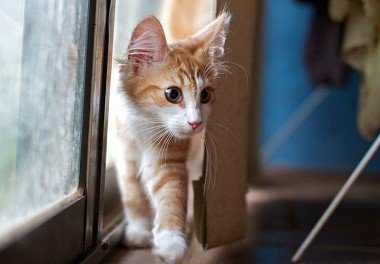
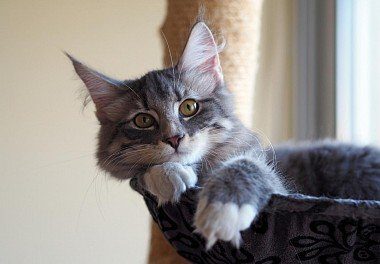
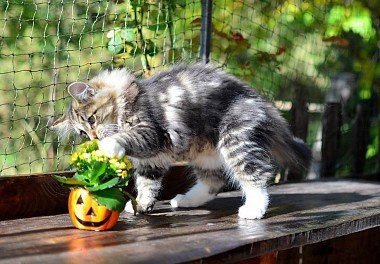
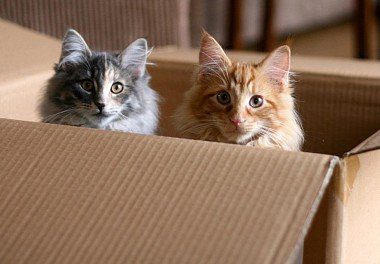
How much is a norwegian forest cat
The price of a Norwegian Forest cat kitten varies widely. This is not about the difference between a baby with a pedigree and a baby bought “by hand” – this issue has been clarified above. The fact is that all thoroughbred animals are divided into conditional classes.
The most affordable option is the so-called “domestic” Norwegian, that is, a kitten whose exterior has more or less serious deviations from the breed standard. If you are looking for a friendly family pet, the length of his tail, the smoothness of his profile or the setting of his ears are not decisive, are they? But the acquisition will not be a blow to the family budget: depending on the prestige of the nursery and the eminence of the ancestors, the price of such a fluffy starts at 150$.
For a future exhibition participant, breeders ask for 500-700$ and more, here the figure additionally depends even on the color and eye color. Only kittens born from a mother who is registered in the club of cat lovers have permission to participate in competitions and breeding. In the same place, one and a half month old babies undergo activation and receive an official metric. Without the latter, you later (at the age of 6-7 months) will not be able to issue an international pedigree. The cost of Norwegian Forest kittens from elite parents in the best nurseries can reach 1600$.



